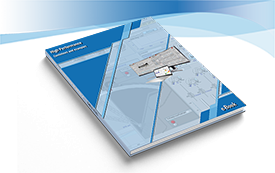ANSI/ISA-101
Since the introduction of DCS systems, operator interfaces are designed without specific guidelines or standards. Guidelines for designing, implementing and maintaining human machine interfaces for industrial plant operations have been formulated after years of research and analysis.
ANSI/ISA – 101 Human Machine Interfaces for Process Automation Systems
This standard addresses HMI for equipment and automated processes.
This development is closely monitored by Provire and the new standard is used in the design of new operator interfaces. Interface design based on the guidelines are described as High Performance HMI.
ANSI/ISA-101
A High Performance HMI is designed with a consideration of user and functional requirements, with good human factor engineering. This means that the design of the interface is not only focused on the process and control itself, but also on the environment and operator. The interface provides situational awareness, intuitive handling and supervision of automated activities.
The operator interface according to the new standard is designed to provide the right information and to reduce stress and fatigue of the operator. Also, a conversion is necessary from the manner in which the process is controlled, from reactive to proactive. Reactive means alarm driven process control and proactive means process-driven process operation.
To date processes are usually controlled on the basis of response (intervention) in abnormal situations, whether high or low alarms. This will make the process running less smoothly and the risk of a production stop increases. This also gives more emphasis on hardware in the field. Proactive process operation means being aware of the situation and making corrections in time as process values deviate from the normal situation.
ANSI/ISA-101
As a guideline for the design of good High Performance operator displays, one has drafted a set of rules that serve as the basis:
- A generally non-schematic depiction except when functionally essential.
- Limited use of color, where color is used very specifically and consistently.
- Gray backgrounds to minimize glare.
- No animation except for specific alarm-related graphic behavior.
- Embedded, properly formatted trends of important parameters.
- Analog representation of important measurements, indicating there value relative to normal, abnormal and alarm conditions.
- A proper hierarchy of display content providing the progressive exposure of detailed information as needed.
- Low-contrast depictions in 2D not 3D.
- Logical land consistent navigation methods.
- Consistent flow depiction and layout to minimize crossing lines.
- Techniques to minimize operator data entry mistakes.
- Validation and security measures.

download article:
High Performance.pdf